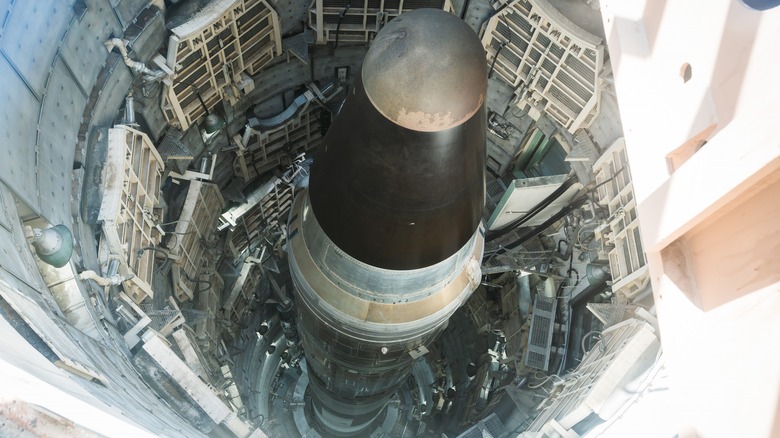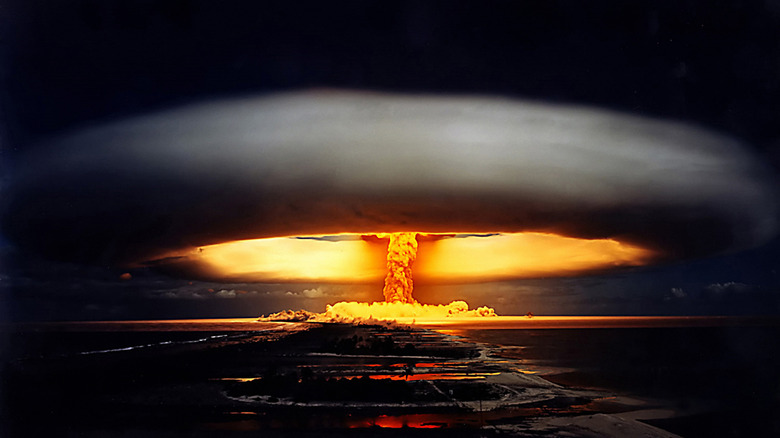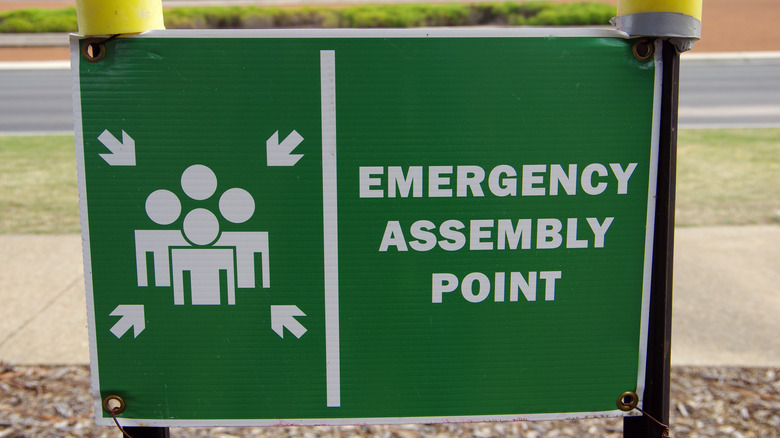The Rule Russia Has To Follow If They Use An ICBM
Tensions and fears regarding the Russia-Ukraine war rose sharply when Ukraine fired six U.S.-provided MGM-140 ATACMS ballistic missiles at a military target inside Russian territory on November 19, 2024. The move came two days after Joe Biden's administration pivoted on its decision regarding such weaponry and also moved to forgive $4.7 billion in Ukrainian war debt ahead of the president leaving office in January 2025. As CNN quotes Russian Foreign Minister Sergey Lavrov, Russia "will perceive launches of long-range missiles guided by U.S. military experts as a qualitatively new phase of war by the West." And so, on Thursday, November 22, Russia retaliated by firing missiles at a number of Ukrainian cities, especially Dnipro in central-eastern Ukraine.
Various media outlets have also reported that Russian President Vladimir Putin directly threatened to use nuclear weapons against Western countries supporting Ukraine. This isn't exactly true. Deutsche Welle explains that on November 19, the day that Ukraine fired missiles into Russian territory, Putin signed what amounts to an update to his discretion regarding when to use nuclear weapons — a tacit threat, to be sure. Previously, they could only be launched in response to nuclear strikes. Now, Russia can use nuclear strikes in response to non-nuclear attacks. But even if Russia does decide to fire nuclear weapons on its enemies, there's one failsafe in place for people on the ground in the target zone. As the U.S. State Department cites, Russia has to announce that it's going to do so 24 hours ahead of time.
A 24-hour minimum notification window
The rule about Russia giving 24-hour advance notification of a nuclear strike is specific to the United States' 1988 Agreement on Notifications of ICBM and SLBM Launches between Ronald Reagan- and Mikhail Gorbachev-led governments. The U.S. State Department explains that the agreement was made between America and the Soviet Union, the latter of which dissolved in 1991 and fragmented into numerous different countries. Presumably, the agreement still applies to modern-day Russia (though as The Washington Post noted, there have been conflicting statements from the country regarding its adherence to the rules of the pact).
As the U.S. State Department details, the agreement applies to intercontinental ballistic missiles (ICBMs) and submarine-launched ballistic missiles (SLBMs), covering nuclear strikes launched from air or sea. The arrangement stemmed from the desire of both nations to "reduc[e] the risk of nuclear war as a result of misinterpretation, miscalculation, or accident." It also sought to rectify earlier 1970s agreements that insufficiently addressed the issue of providing the other country with notification of a nuclear attack, specifically 1971's Accidents Measures agreement, 1972's Incidents at Sea agreement, and Article XVI of 1979's SALT II Treaty (which was never actually ratified).
None of these former agreements sufficiently reassured either party that the other would provide notification of an impending nuclear strike. And so, 1988's Agreement on Notifications acted as a "confidence-building measure" between superpowers, as the U.S. State Department says. The arrangement requires notification of the launch date, where a missile will be launched from, the intended target, and deems that it must occur at least 24 hours in advance and four days at maximum. No party is required to notify the other if the strike is canceled.
One to four days to evacuate
As mentioned, Russian President Vladimir Putin expanded the scope of his nuclear weapon capabilities, effectively making the bar for use much lower. But, thanks to 1988's Agreement on Notifications of ICBM and SLBM Launches between the United States and the Soviet Union, citizens of America and Russia at least have a chance to not be annihilated if their "geographic coordinates" get targeted. Per the U.S. State Department, those coordinates must be shared and include ground zero and the expected radius of the missile's detonation.
The worst-case scenario would entail an ICBM or SLBM targeting a heavily populated civilian area. Even if such a region received notification of an impending nuclear strike, the realities of evacuation would be an absolute nightmare. Clearing a single building is difficult enough, and rush-hour traffic horrible enough. But if a city of millions floods into the streets either in cars or on foot, it seems highly unlikely that everyone could get out on time.
As the UN Refugee Agency says, in the case of evacuating non-combatants from a war zone, "meticulous forward planning will be critical to minimize potential loss of life and any other risks to the civilian population and humanitarian staff." Note the term "humanitarian staff" in there, indicating those individuals putting themselves at risk to help others logistically, medically, or otherwise. Ultimately, let's just hope that all those involved in the current Ukraine-Russia conflict choose to deescalate rather than put arrangements like the Agreement on Notifications of ICBM and SLBM Launches to the test.


